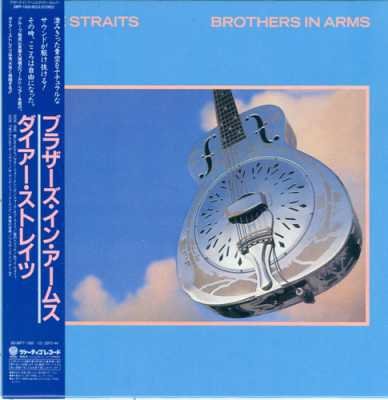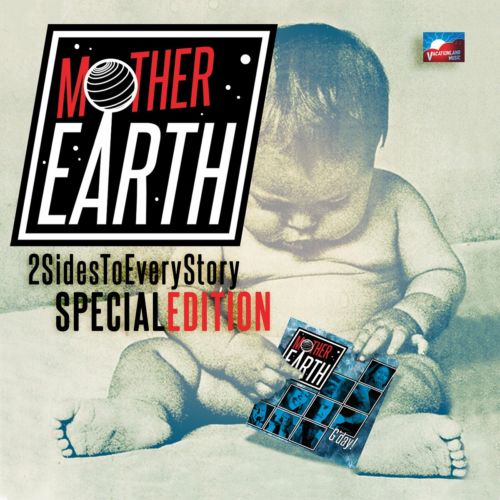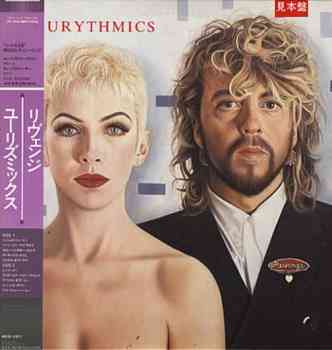
JOHN MILES CD re-releases had been sporadic at best, not easy to find. As requested, here’s this 5-CD Box Set “The Decca Albums“, containing a quintet of albums from the British singer, songwriter and musician. Contains expanded editions (including single mixes, B-sides) of the albums Rebel (1976),
Stranger In The City (1977), Zaragon (1978) and More Miles Per Hour (1979) and best of all is the inclusion of the 10-track 1978 BBC Live in Concert, accompanied by a 20 page booklet outlining his biography and career… a largely over looked career.
Five albums remastered with a total of 14 additional tracks.
Produced by master Alan Parsons, John Miles released his first alo album ‘Rebel’ in 1976. The single ‘Music’ resulted an instant hit, and while Miles always will be remembered for that stupendous song, the rest of his discography is very good.
”The Decca Albums” is a proof of that.
As part of several projects, Miles was improving as a singer and songwriter. As the first half of the Seventies progressed, record companies began to take an interest in John Miles. Both EMI and Decca Records were vying for John’s signature. This was a huge decision for the twenty-six year old. Eventually, though, John decided that Decca Records who were looking to add to their contemporary rock&pop roster, offered more of an opportunity.
With John Miles signed to Decca Records, the label decided to pair their latest signing, with one of Britain’s top producers, Alan Parsons. He had worked with Pink Floyd on their Magnus Opus, Dark Side Of The Moon in 1973. Since then, he had worked with some of the biggest names in music. So it was a something of a coup that he agreed to produce John Miles new single.
The song they chose Highfly, which in Alan Parsons’ hands, took on an art rock sound. It was released on September 1975, and eventually, reached seventeen in the UK charts and sixty-eight in the US Billboard 200.
After the success of Highfly, John Miles would complete recording of his debut album, recorded at Abbey Road Studios.
During November and December John Miles and his band headed to Abbey Road Studios in November 1975. Drummer and percussionist Barry Black and bassist Bob Marshall accompanied John. He added lead vocals, and played keyboards, guitar and synths. Andrew Powell took charge of the orchestral arrangements and Alan Parsons produced, what would become ”Rebel”.
As 1975 gave way to 1976, Decca Records began to think about what should be the lead single from Rebel. The song they chose was Music, a near six minute epic. It was released in March 1976 and reached the upper reaches of the charts across Europe.
Music reached number three in the UK; number four in Holland; number number one in Switzerland and eighty-eight in the US Billboard 100. Later, Music won John Miles an Ivor Novello award for Best Middle-Of-The-Road Song. Before that, ”Rebel” was released.
Critical acclaim accompanied the release of ”Rebel”, which was hailed as an album of carefully crafted rock-pop songs. Music may have been the standout track, but there was much more to the LP, including the John Miles and Bob Marshall penned You Have it All, When You Lose Someone So Young and Lady Of My.
They had matured into a talented songwriting team, while John brought each of the songs to life. It was no surprise that when ”Rebel” was released later in March 1976, it reached number nine in the UK and 171 in the US Billboard 200. Elsewhere, ”Rebel” reached the top twenty in Holland and Germany, and the top thirty in Sweden.
For John this the perfect way to begin The Decca Years.
After the release of ”Rebel”, John Miles embarked upon a lengthy tour. It marked the debut of Australian keyboardist Gary Moberley. John had brought him onboard to augment the band’s sound. He would make his recording debut in the summer of 1976, when ”Stranger In The City” was recorded.
During the summer of 1976, John Miles was touring, supporting both Jethro Tull and the Rolling Stones. Despite what was a gruelling touring schedule, John Miles still found time to begin work on his sophomore album, ”Stranger In The City”.
Despite the success of Rebel, Alan Parsons didn’t return to produce ”Stranger In The City”. Instead, singer-songwriter Rupert Holmes took charge of producing John Miles’ newly expanded band. Recording took place at Mediasound in New York and Utopia Studios in London. That was where the newly expanded lineup of the band got to work.
In January 1977, Manhattan Skyline was released as the lead single from ”Stranger In The City”. It failed to chart on either side of the Atlantic. For John Miles and everyone at Decca Records, this was a worrying time. However, in February 1977, ”Stranger In The City” was released.
Reviews of ”Stranger In The City” had been mostly positive. The occasional critic wasn’t convinced thatthe new LP was as cohesive an album as Rebel. It was a much more eclectic album, with everything from pop to blue eyed soul, funk, rock and soul. Slow Down even married rock and funk with disco. Now that critics had cast their vote on Stranger In The City, the album was released.
When Stranger In The City in February 1977, the album reached just thirty-seven in the UK. However, in America, Stranger In The City proved much more popular, reaching ninety-three in the US Billboard 200. Elsewhere, the album reached the top twenty in Norway and Sweden. That, however, wasn’t the end of the commercial success.
Slow Down was released as a single in May 1977. It reached number ten in the UK and thirty-four in the US Billboard 200. Given its dance-floor friendly sound, Slow Down gave John Miles a hit in the US Dance Music charts, when it reached number two. The John Miles’ success story continued apace.
Clive Davis at Arista Records was watching events unfold. He had an unrivalled reputation as a talent spotter, and wanted John Miles on Arista Records’ roster. This he soon discovered, would come at a price. That price was in the region of $500,000. Undeterred, Clive Davis wrote the cheque, and John Miles was now signed to Arista Records in America. Back home in Britain, The Decca Years continued.
Following the release of Stranger In The City, John Miles spent much 1977 touring the album. Then in October 1977, John began to record his much-anticipated third album, ”Zaragon”.
For ”Zaragon”, the John Miles and Bob Marshall songwriting team wrote seven new songs. This included the eight minute epic Plain Jane, and the three part suite Nice Man Jack. These seven songs were recorded by John’s original band with Rupert Holmes again taking charge of production. This time, it was decided that there should be no orchestral arrangements.
John Miles wanted to be able to replicate the songs live. Just like many progressive rock groups, including Emerson, Lake and Palmer, John had discovered the more complicated the arrangement, the harder it is to replicate live. It seemed John had learned his lesson after two years of trying to replicate the arrangements on Rebel and Stranger In The City. That may not have been the only reason.
Music was changing, with punk, post punk and disco among the most popular musical genres So were people’s opinions on orchestral arrangements. Many critics and record industry insiders thought that albums with orchestral arrangements were yesterday’s sound.
For John Miles, he was moving towards rock epics, like Overture, which lasted nine minutes. Keyboards and synths were to the fore, and replaced the lush, orchestral arrangements of previous albums. Over the course of three months, John Miles had reinvented himself. The reinvention of John Miles was complete in December 1977, when ”Zaragon” was handed over to Decca Records.
At least Zaragon was well received by most critics. This mixture of the occasional ballad and rock epics proved to be a popular and potent combination. Especially songs like Overture, I Have Never Been in Love Before, No Hard Feelings and Zaragon. They were among the highlights of Zaragon, which was released in March 1978.
”Zaragon” was released in UK on Decca Records, and reached forty-three. This was regarded as a success given how music had changed over the last year or so. Elsewhere, ”Zaragon” reached number three in Norway and Sweden. John had built up a loyal following after years of constantly touring Europe.
One place where John wanted his commercial success to continue was America. ”Zaragon” reached just 210 in the US Billboard 200. It was John’s first album not to chart in America. For John this was a bitter blow. All was not lost though.
Maybe though, a performance on British television and radio would help sales of Zaragon?
Back home in Britain, one of the BBC’s most popular music shows on television and radio was Sight and Sound In Concert. It allowed an artist to be heard by a vast audience. Many of them had a voracious appetite when it came to buying albums. A good performance on Sight and Sound In Concert, would given Zaragon and the rest of John Miles’ back-catalogue.
So on 11th March 1978, John Miles and his band headed to Queen Margaret’s College, London. They worked their way through a ten song set.
Opening with Nice Man Jack from Zaragon, John Miles returned to Stranger In The City, for Music Man. Then it was a return to Zaragon, for Plain Jane, Overture, Zaragon and No Hard Feelings. Having showcased Zaragon, John returned to his sophomore album Stranger In The City. Stand Up (and Give Me A Reason gave way to Stranger In The City.
With just two songs to go, John returned to Zaragon and played Borderline, before closing the show with Slow Down from Stranger In The City.
This is the extra disc featured here: “BBC In Concert”, for the first time officially released here, remastered.
John Miles’ decision to eschew orchestral arrangements on Zaragon had backfired. It was time to rethink his future musical direction. Maybe it was time for John to return to what had become his trademark sound. That wasn’t the other decision that he would have to make; did Rupert Holmes have a future as John’s producer.
Rupert Holmes had neither built on, nor replicated the success of the Alan Parsons’ produced Rebel. Maybe he should’ve cautioned John Miles about changing direction on Zaragon? What was clear, that neither Stranger In The City nor Zaragon, replicated the quality nor commercial success of Rebel.
So a decision was made to bring Alan Parsons back to produce MMPH-More Miles Per Hour.
With Alan Parson back onboard, Andrew Powell returned to take charge of the orchestral arrangements on MMPH-More Miles Per Hour. It comprised eight songs penned by John Miles and Bob Marshall. Recording began in November 1978, at Super Bear Studios, near Nice, in France.
That was where John Miles and his band began work. It featured drummer Barry Black and bassist Bob Marshall were joined by keyboardist Brian Chatton. The recording of MMPH-More Miles Per Hour was completed at Union Studios, in Munich, Germany. January 1979. Now John’s thought’s turned to the release of his fourth album.
Just three months later, ”MMPH-More Miles Per Hour” was released in April 1979. Mostly, it was to critical acclaim. MMPH-More Miles Per Hour was a much more cohesive and focused album, which featured carefully crafted songs. They had been sweetened by Andrew Powell’s orchestral arrangements, and definitely benefited from Alan Parsons’ guiding hand. He seemed to able to get the best out of John Miles. Maybe this would result in a change in fortune for John?
Can’t Keep a Good Man Down was released as the lead single from More Miles Per Hour, but failed to chart. When MMPH-More Miles Per Hour was released, it stalled at forty-six in the UK, and failed to enter the US Billboard 200. A small crumb of comfort was that MMPH-More Miles Per Hour reached number six in Norway and ten in Sweden. That was as good as it got.
Neither of the other two singles from MMPH-More Miles Per Hour, Oh Dear, nor (Don’t Give me Your) Sympathy charted. For John Miles, it must have been a frustrating way to end The Decca Years.
”MMPH-More Miles Per Hour”. like all of John’s Decca Records’ albums, deserved to fare better. It’s a very good LP
”The Decca Years” is a tantalising taste of John Miles and his tight, talented band at their best. The live disc is a welcome addition to The Decca Years. So are the bonus tracks that feature on each disc. That’s why The Decca Years is without doubt, a truly comprehensive retrospective of John Miles’ early career.
Highly Recommended
CD1 – Rebel (1976)
01 – Music
02 – Everybody Wants Some More
03 – Highfly
04 – You Have It All
05 – Rebel
06 – When You Lost Someone So Young
07 – Lady Of My Life
08 – Pull The Damn Thing Down
09 – Music (Reprise)
BONUS TRACKS:
10 – Jose
11 – You Make It So Hard
12 – There’s A Man Behind That Guitar
13 – Putting My New Song Together
CD2 – Stranger In The CIty (1977)
01 – Stranger In The City
02 – Slow Down
03 – Stand Up (And Give Me A Reason)
04 – Time
05 – Manhattan Skyline
06 – Glamour Boy
07 – Do It Anyway
08 – Remember Yesterday
09 – Music Man
BONUS TRACKS:
10 – House On The Hill
11 – Remember Yesterday [Single Version]
12 – Stand Up (And Give Me A Reason)
13 – Slow Down [Single Version]
CD3 – Zaragon (1978)
01 – Overture
02 – Borderline
03 – I Have Never Been In Love Before
04 – No Hard Feelings
05 – Plain Jane
06 – Nice Man Jack
07 – Zaragon
BONUS TRACK:
08 – Nice Man Jack [Single Version]
CD4 – MMPH – More Miles Per Hour (1979)
01 – Satisfied
02 – It’s Not Called Angel
03 – Bad Blood
04 – Fella In The Cellar
05 – Can’t Keep A Good Man Down
06 – Oh Dear!
07 – C’est La Vie
08 – We All Fall Down
BONUS TRACKS:
09 – Sweet Lorraine
10 – Don’t Give Me Your Sympathy
11 – If You Don’t Need Lovin’
12 – Can’t Keep a Good Man Down [Single Version]
13 – Oh Dear! [Single Version]
CD5 – BBC In Concert (March 1978)
01 – Nice Man Jack [Live]
02 – Music Man [Live]
03 – Plain Jane [Live]
04 – Overture [Live]
05 – Zaragon [Live]
06 – No Hard Feelings [Live]
07 – Stand Up (And Give Me A Reason) [Live]
08 – Stranger In The City [Live]
09 – Borderline [Live]
10 – Slow Down [Live]
JOHN MILES – The Decca Albums (5CD Box Set remastered + bonus), MP3+FLAC
 |









